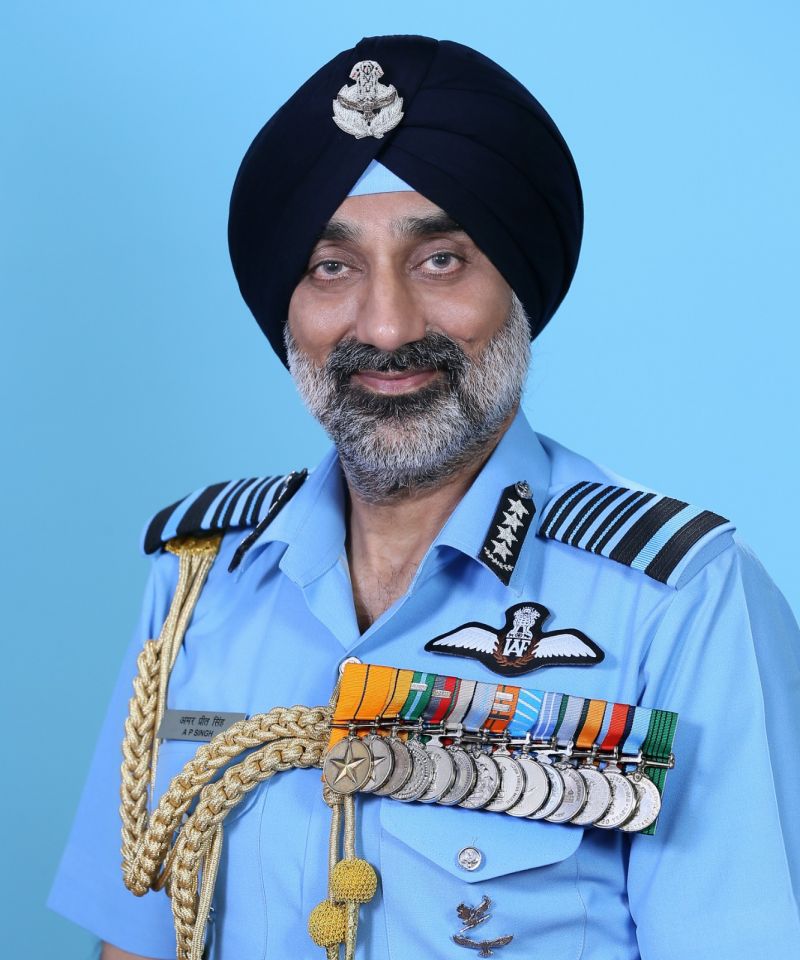IAF has a well laid out plan for future war – Air Chief

On the occasion of 92nd Indian Air Force Day, IDI’s editor Rohit Srivastava interviewed Air Chief Marshal AP Singh, PVSM, AVSM, Chief of Air Staff, Indian air Force (IAF). Here are some excerpts.
IDI – The ongoing delay in the supply of engine for LCA programme is jeopardising the IAF modernisation plan. What is the IAF’s contingency plan for this?
CAS – IAF has inducted two squadrons of Light Combat Aircraft (LCA) Mk1 'Tejas'. The LCAs had participated in the recently concluded international exercise Tarang Shakti. Tejas MK-1A programme has been delayed due to engine supply and a few more issues. IAF has been proactive in its approach and we are hopeful that the engine delivery will start soon. HAL has also been asked to increase the production of Tejas and they have been forthcoming about it. While delay in supply of GE 404 engines is delaying the induction of LCA Mk IA, even the design and development has not been completed as yet. HAL needs to complete its D & D activities and produce the air frames as per provisioned rate. Once that is done, IAF has committed to help HAL out with using Cat B engines to progress production testing.
IDI – As the battle field is becoming excessively transparent, the role of air platforms are increasing whereas the land systems are becoming increasingly redundant and the onus of victory is shifting largely on air platforms. Does IAF agree with this new paradigm and if so how do you plan to take on this additional responsibility?
CAS – Amongst the tools of war, air power has had a predominant impact in most conventional conflicts. Right from World War-I onwards, and including in our own wars in 1948, 1962, 1965, 1971 and in Kargil (1999), air power has made a significant contribution to the outcome of conflicts all across the world. The US has especially used air power well and to its advantage, by harnessing technology combined with a well evolved doctrine to ensure that it retains a clear and decisive edge in the aerospace domain. Only air power can counter enemy’s air power. This implies that an enemy’s build-up of aerospace power needs commensurate investment in own aerospace power. It is in implicit recognition of this fact that countries which expect to fight or deter war have been spending a major part of their defence capital budgets on air power.
IAF is cognisant of these facts and is ready to shoulder this responsibility. IAF has a well laid out plan for comprehensive capability development to meet the requirements of future war.
IDI – World over the new fighter programmes are not being pursued with much enthusiasm. Nations are continuing to retain technology and evaluate new and emerging technologies. India is the only major nation with multiple active fighter development programmes. Would the designs and capabilities needed to fight yesterday’s war be relevant in the coming future?
CAS – While, the military discourse on recent conflicts has focused on unmanned systems, the actual developments underscore the requirement of a collaborative approach led by a manned fighter. Globally, aerospace and next-generation manned fighter programs are a key element of military development. NGAD program of the US, FCAS of Europe, Tempest of the UK, J-20/ FC 31 and development of J-X sixth generation aircraft of China, and joint program by Turkiye and Pakistan to develop 5th gen fighter “KAAN/ TF-X” emphasize impetus of major military powers on a collaborative manned fighter. DARPA’s Air Combat Evaluation (ACE) program summarises this development approach that fosters human machine teaming through a hierarchical system in which the highest level of cognitive functions (combat strategy design, target selection and prioritisation etc.) would be the responsibility of humans, while less demanding cognitive functions (tactical manoeuvres etc.) would be left to UCAVs.
IDI – UCAVs and small drones are the main weapons for defence, attack and ISR. Both Army and IAF are training and equipping units for drones. Wouldn’t it be wise to place all UAVs, esp., smaller than a certain size with only one service? Given the emerging nature of war, shouldn’t IAF hold only larger size UAVs?
CAS – The concept of operations involving different class of UAS depends on the employability against a specific target. The smaller UAS are being employed in a variety of roles and different areas as per their op-capabilities. Hence it would be incorrect to say that they should be restricted to one service only.Our concept of operations caters for integrated operations with both army and navy.




